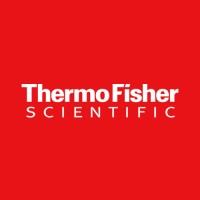PD-1 / PE-Cy7 / 29F.1A12
Product Details
| Description | PD-1 / CD279 Monoclonal Antibody, PE, Cy® 7 conjugate (29F.1A12). Cell-mediated immune responses are initiated by T lymphocytes that are themselves stimulated by cognate peptides bound to MHC molecules on antig en-presenting cells (APC). T-cell activation is generally self-limited as activated T cells express receptors such as PD-1 (also known as PDCD-1) that mediate inhibitory signals from the APC. PD-1 can bind two different but related ligands, PDL-1 and PDL-2. Upon binding to either of these ligands, signals generated by PD-1 inhibit the activation of the immune response in the absence of danger signals such as LPS or other molecules associated with bacteria or other pathogens. Evidence for this is seen in PD1-null mice who exhibit hyperactivated immune systems and autoimmune diseases. Despite its predicted molecular weight, PD-1 often migrates at higher molecular weight in SDS-PAGE.FACS Assay Dependent | |
|---|---|---|
| Conjugate | PE-Cy7 | |
| Clone | 29F.1A12 | |
| Target Species | Mouse | |
| Applications | FC | |
| Supplier | Thermo Fisher Scientific | |
| Catalog # | Sign in to view product details, citations, and spectra | |
| Size | ||
| Price | ||
| Antigen | ||
| Host | ||
| Isotype |
About PD-1
Programmed cell death protein 1 (PDCD1) is an immune-inhibitory receptor expressed in activated T cells; it is involved in the regulation of T-cell functions, including those of effector CD8+ T cells. In addition, this protein can also promote the differentiation of CD4+ T cells into T regulatory cells. PDCD1 is expressed in many types of tumors including melanomas, and has demonstrated to play a role in anti-tumor immunity. Moreover, this protein has been shown to be involved in safeguarding against autoimmunity, however, it can also contribute to the inhibition of effective anti-tumor and anti-microbial immunity. [provided by RefSeq, Aug 2020]
Programmed cell death protein 1 (PDCD1) is an immune-inhibitory receptor expressed in activated T cells; it is involved in the regulation of T-cell functions, including those of effector CD8+ T cells. In addition, this protein can also promote the differentiation of CD4+ T cells into T regulatory cells. PDCD1 is expressed in many types of tumors including melanomas, and has demonstrated to play a role in anti-tumor immunity. Moreover, this protein has been shown to be involved in safeguarding against autoimmunity, however, it can also contribute to the inhibition of effective anti-tumor and anti-microbial immunity. [provided by RefSeq, Aug 2020]
About PE-Cy7
PE-Cyanine®7 (PE-Cy7, RPE-Cy7) is a far red-emitting tandem fluorophore that combines phycoerythrin (PE) and Cy7. The donor molecule, PE can be excited by the 488-nm blue, 532-nm green, or 561-nm yellow-green laser and and transfers energy to the acceptor molecule, Cy7, which emitts light that can be captured with a 780/60 nm bandpass filter. PE-CY7 has an excitation peak at 565 nm and an emission peak at 778 nm, and is a suitable alternative to PE-Vio®770 and PE-Fire™ 780.
PE-Cyanine®7 (PE-Cy7, RPE-Cy7) is a far red-emitting tandem fluorophore that combines phycoerythrin (PE) and Cy7. The donor molecule, PE can be excited by the 488-nm blue, 532-nm green, or 561-nm yellow-green laser and and transfers energy to the acceptor molecule, Cy7, which emitts light that can be captured with a 780/60 nm bandpass filter. PE-CY7 has an excitation peak at 565 nm and an emission peak at 778 nm, and is a suitable alternative to PE-Vio®770 and PE-Fire™ 780.
Experiment Design Tools
Panel Builders
Looking to design a Microscopy or Flow Cytometry experiment?
Validation References
Reviews & Ratings
| Reviews |
|---|
Looking for more options?
2041 PD-1 antibodies from over 42 suppliers available with over 103 conjugates.





